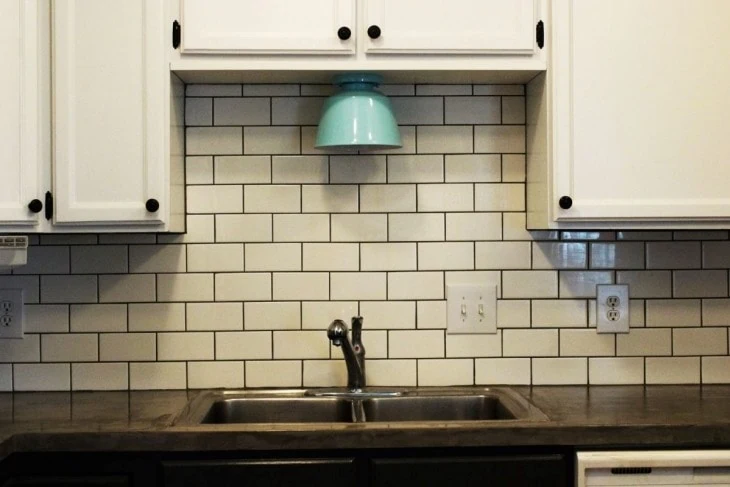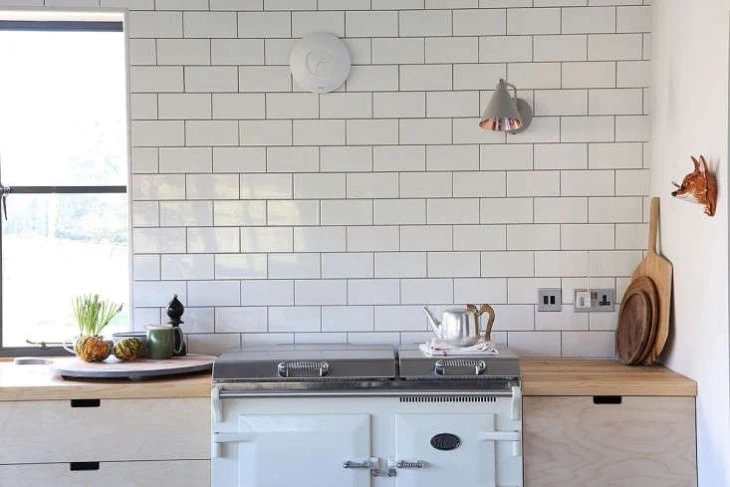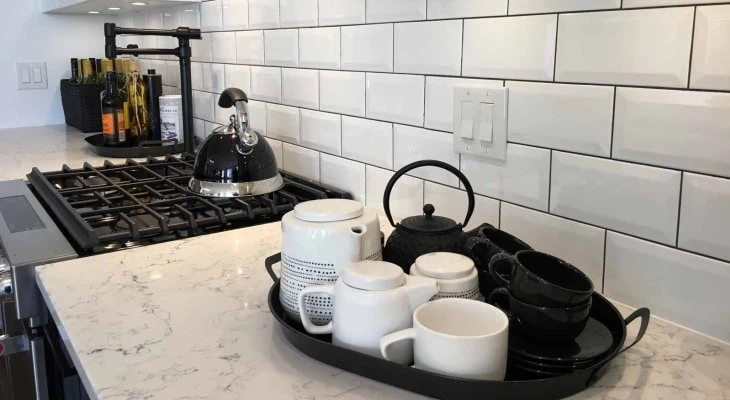Selecting tile for your shower or kitchen is a commitment. Of course, it’s not always an easy decision. If you walk down the tile aisle of a hardware store, you’ll find dozens of sizes in numerous shapes and colors waiting for you.
So, what size of subway tile to pick for commonly tiled areas like the bathroom or shower?
The answer to that question depends on three factors: the location of the tile, your desired room style, and your budget.
Table of Contents
What Size Subway Tile Works Best in a Shower?

In most homes, bathrooms are taller than they are wide – and usually no bigger than 100 sq. feet in the average home (however, master bathrooms sometimes are as big as 200 sq. feet or bigger in larger homes.)
Because of their standard dimensions, bathrooms usually accommodate rectangular tile shapes well in both horizontal and vertical placements.
Therefore, both 3×6 and 4×12 tiles work well in bathroom spaces. However, 3×6 tiles will typically work best for the average bathroom.
When selecting tile for the bathroom, it’s critical to keep in mind what surface you plan to tile. For example, if you plan on tiling only a shower, 4×12 subway tile will suit as well as 3×6 subway, and it costs less to cover the entire shower area.
However, backsplashes above a sink or around a counter usually work best with a smaller tile to ensure a detailed enough design.
Also, remember that most bathrooms use square tiles for the floor, so whatever wall tile size you select needs to pair well with your floor tile shape and pattern.
What Size Subway Tile Works Best in a Kitchen?

When tiling kitchens, you usually have more leeway on the size of tile used because kitchens are generally larger than bathrooms. Usually, your budget and desired room style will impact tile size more than the dimensions of the space.
Generally, the 3×6 subway tile looks best as a backsplash above the kitchen sink or between counters and cabinets. Smaller tiles like the 3×6 size usually fit into the niches and corners of a kitchen space easier than 4x12s.
However, that rule can change if you have an exceptionally long backsplash area to tile. In that case, a 4×12-sized subway tile can reduce the cost of the project by reducing the number of materials and hours of labor required to fill the entire space.
How Does Tile Size Impact a Room’s Overall Style?
When selecting the size of tile to use in a bathroom or kitchen, you need to consider your desired overall tone and style for the room.
For example, smaller tiles like a 3×6 size may work well in tight spaces, but too many will create a busy environment and look cluttered.
Conversely, using 4×12 tiles in a smaller space can create awkward cutoffs in a tile pattern and leave the room feeling incomplete.
If you are still determining the size of tile to use in your space, ask for a sample of both sizes to take home. Compare the tile sizes in your room for a better perspective on the final look.
Alternatively, you can buy a peel-and-stick subway tile sample to test both sizes on the walls of your space. You can usually find inexpensive kits on Amazon.
If you remain unsure, contact your tile installation company for professional advice on your specific space.
How Do You Keep Tile Project Prices Down?

Generally speaking, larger tiles cost less to purchase and install, while smaller tiles offer more flexibility with patterns and designs. Therefore, opting for larger tiles usually keeps the price down.
Additionally, the type of tile material will impact the overall cost of a tiling project. For example, subway tile is a ceramic-based tile, which is durable and relatively inexpensive.
However, choosing a different type of material, like granite or marble cut in similar dimensions to subway tile, will increase the price of your project.
A Note on Tile Size and Inexpensive Backsplash Patterns
Subway tile lends itself well to patterned backsplashes because of the variety of colors and textures available. However, the more complex the backsplash pattern, the more expensive the tile project.
You can create an affordable and unique backsplash pattern by varying the tile’s layout.
For example, longer subway tiles like the 4×12 size work well to create an elegant herringbone pattern. However, if you need smaller tiles for a tighter space, you can use mixed colors to create a vibrant and tasteful design. Or, for a classic and timeless look, you can stick to a single subway tile color and size.

